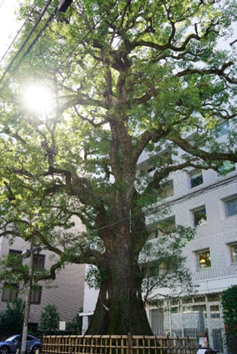Climate and Geography Develop Spiritual Connections between Giant Trees and Human Beings
Giant trees are the largest and longest living organisms on the Earth and play an important ecological role in the natural world. Moreover, human societies recognize relatively large trees, and position them in significant sociocultural roles. Giant trees that have gained unique identities are often named by local people, can inspire a sense of awe and become objects of faith. In this manner, giant trees have a spiritual connection with local people and encourage social cohesion among them; therefore, attachments to and identification with giant trees facilitate people’s spiritual well-being. In other words, giant trees provide various spiritual ecosystem services that benefit the spiritual well-being of human societies. However, the development of spiritual connections between giant trees and human beings has not revealed yet.
Geography and climate are known to influence the age, size, and other properties of trees. Describing patterns and revealing background processes is a main topic in macroecology, which focuses on large spatial and temporal ecological patterns. Previous studies have suggested that trees with extraordinary properties (e.g., large size and old age) tend to be given unique names and are recognized as sacred. Other studies suggested that religion is related to climatic and geographical context. Consequently, the size and distribution of trees and the provision of spiritual ecosystem services may be influenced by macroecological processes (e.g., geography and climate). An appropriate methodology that can simultaneously consider multiple hypotheses can be used to uncover these unknown processes could be revealed from a macroecological perspective.
A macroecological study conducted by Ryosuke Nakadai (National Institute for Environmental Studies, Japan) used structural equation modeling (SEM) with 38,994 giant tree records from 237 species across Japan to show that climate variable, such as annual precipitation and temperature, and geographical variables, such as latitude and elevation, may drive both probabilities of being an object of faith and receiving a unique name for giant trees directly and indirectly via tree properties (e.g., size and age). For example, both trunk circumference and tree age were the top two influential variables for the probability of a tree of becoming an object of faith and receiving a unique name. Tree trunk circumference and age were also strongly correlated with climatic factors. The most interesting relationship was that the probability of a tree being an object of faith and receiving a unique name tended to increase with lower annual precipitation. The worship of giant trees in Japan is partly related to “pray for rain” (雨乞い; “Amagoi” in Japanese) and some trees even have associated names. Therefore, the piecewise SEM results are strongly consistent with previous empirical findings. Rice cultivation was the foundation of traditional Japanese society, and the abundance or failure of rice crops was a matter of great concern directly linked to life and death. Among various climatic factors, drought was the strongest factor in a devastating decline in rice yields.
This study on giant trees in the Japanese archipelago is the first to clearly demonstrate the relationship between spiritual ecosystem services and underlying macroecological processes, which have previously been difficult to quantify. These findings provide a starting point for further clarification of the spiritual connection between people and biodiversity, as well as the driving processes behind this connection. This study suggests potential impacts of climate change on the spiritual connections between giant trees and human beings. The prevention the loss of such spiritual ecosystem services, of which the role and importance to human society remain unclear, warrants further research.

Contacts
Ryosuke Nakadai Ph.D.
National Institute for Environmental Studies
About the article
Article Title: Macroecological processes drive spiritual ecosystem services obtained from giant trees
Article Publication Date:13 February 2023 at 16:00 (London time)
Authors: Ryosuke Nakadai Ph.D.
Journal: Nature Plants
DOI: 10.1038/s41477-022-01337-1
Original URL: https://doi.org/10.1038/s41477-022-01337-1
- What's New
- What's New 2025
- What's New 2024
- What's New 2023
- What's New 2022
- What's New 2021
- What's New 2020
- What's New 2019
- What's New 2018
- What's New 2017
- What's New 2016
- What's New 2015
- What's New 2014
- What's New 2013
- What's New 2012
- What's New 2011
- What's New 2010
- What's New 2009
- What's New 2008
- What's New 2007
- What's New 2006
- What's New 2005
- What's New 2004
- What's New 2003
- What's New 2002
- Event Information
- Visit NIES